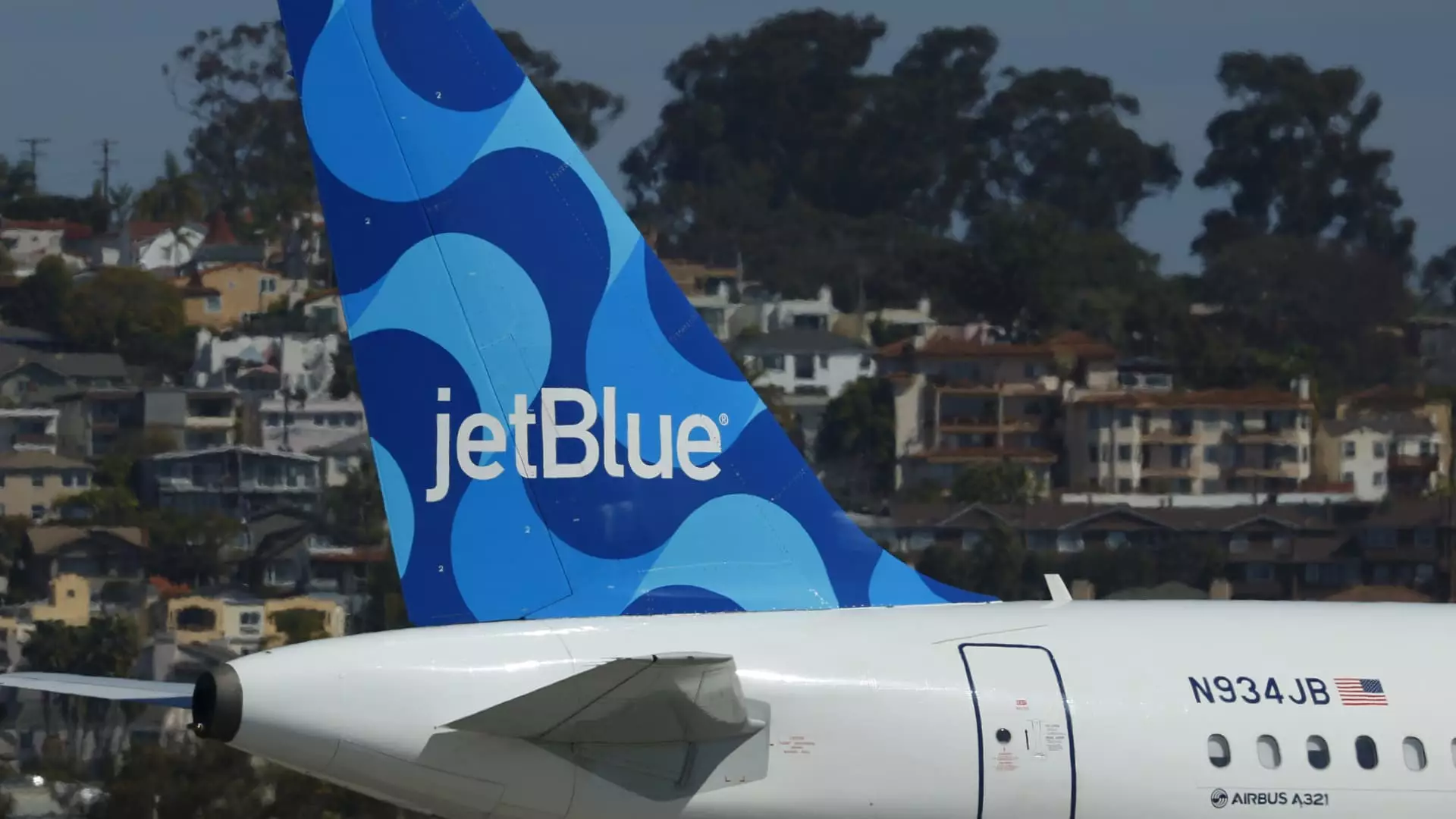In the world of aviation, adaptability remains the hallmark of a successful airline, particularly when faced with turbulence in market demand. JetBlue Airways, under the leadership of CEO Joanna Geraghty, has recently communicated the tough realities of the current travel landscape. With travel demand softer than anticipated, JetBlue is embarking on a journey of intensive cost-cutting measures to navigate the financial storm ahead. Geraghty’s frank acknowledgment that achieving break-even margins this year appears “unlikely” signals a critical period for the airline, prompting a strategic reassessment of operations.
Cost-Cutting Strategies and Operational Adjustments
JetBlue’s immediate strategy involves slashing off-peak flights and reevaluating less profitable routes. By strategically withdrawing from these areas, the airline aims to strengthen its financial footing while also consolidating resources. A noteworthy decision is the indefinite postponement of refurbishing older Airbus A320 jets, directing attention towards the remaining aircraft slated for upgrade next year. Such operational alterations not only reflect fiscal prudence but indicate a broader acknowledgment that temporary sacrifices are necessary for long-term sustainability.
Beyond flight adjustments, JetBlue is also focusing on organizational efficiency by considering job consolidations within leadership roles. This introspection of its management framework signifies the airline’s intent to emerge leaner and more competitive. The emphasis on scrutinizing travel expenditure further amplifies its commitment to ensuring every dollar spent furthers the goal of restoring profitability.
The Demand Dilemma and Market Responses
As JetBlue grapples with decreased domestic booking levels, it aligns its approach with many competitors in the U.S. aviation sector, including a reduction in capacity for the latter half of the year. According to U.S. Department of Labor’s reports, airfare has experienced a notable decline, down 7.3% compared to last year, creating an increasingly competitive landscape where price sensitivity may define customer choices.
Additionally, the recent failure to merge with Spirit Airlines and the blockage of its alliance with American Airlines in 2023 represent strategic setbacks that JetBlue must navigate. With these significant hurdles in mind, the tactical partnership with United Airlines emerges as an instrumental development. This collaboration not only provides customers the opportunity to book across both airlines, but also intertwines frequent flyer programs, offering a dimension of profitability that may compensate for previous missteps.
Investing in the Future
Despite the immediate financial concerns, JetBlue remains committed to its growth strategies, particularly in enhancing its customer offerings. The focus on premium-class seating positions the airline to attract travelers willing to invest in comfort, and plans to establish airport lounges signal a determined path toward elevating the overall travel experience. As Geraghty notes, these advancements fundamentally serve as “building blocks of a stronger JetBlue,” demonstrating that the airline is not merely seeking survival but is actively working towards an enhanced competitive profile.
Through these innovative approaches and a strategic focus on core strengths, JetBlue seeks to not only weather the current business climate but emerge as a more resilient player in the aviation industry. While the road ahead remains challenging, the airline’s commitment to adaptability and customer experience may well define its trajectory in the coming years.


Leave a Reply